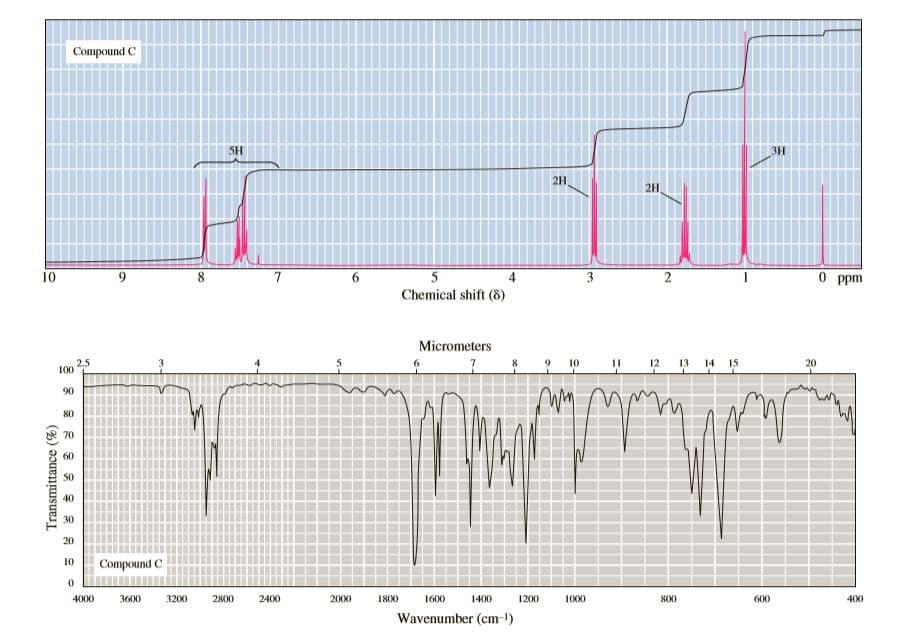Compound C SH 3H 2H 2H 10 8 7 3 2 0 ppm Chemical shift (8) Micrometers 2.5 100 10 11 12 13 14 15 20 90 80 * 70 60 50 40 30 20 10 Compound C 4000 3600 3200 2800 2400 2000 1800 1600 1400 1200 1000 800 600 400 Wavenumber (cm-!) Transmittance (%)
Compound C shows a molecular ion at m/z 148 and other prominent peaks at m/z 105 and 77. Following are its infrared and 1H-NMR spectra.
Q.) Deduce the structural formula of compound C

Introduction-
In order to determine the structure of the compounds through NMR and IR we need to know the basic functional group peaks and IR stretching frequencies of some functional groups.
NMR is always the best technique for identification of compound and its exact structure. Only functional group detection is done through IR spectrum.
Refer below link for NMR peak chart-
https://www.cpp.edu/~lsstarkey/courses/NMR/NMRshifts1H-general.pdf
Refer below link for IR stretching frequencies-
https://www.cpp.edu/~psbeauchamp/pdf/spec_ir_nmr_spectra_tables.pdf
Explanation-
If we observe the given NMR correctly, there are 5 protons in the aromatic region that is 6-8ppm indicating that our desired compound is having aromatic ring.
In the NMR there is a triplet of 2 protons at 3ppm and multiplet of 2 protons at 2ppm and a triplet of 3 protons at 1ppm. This clearly indicates that the compound is having an alkyl most probably propyl side chain.
From the IR spectrum we can come to know that there is a –C=O spectrum at 1690 that it makes us assured of presence of keto group in it.
From the molecular ion peak mass spectrum we know the mass of compound is 148.
Thus the compound is phenyl propyl ketone.
Step by step
Solved in 3 steps with 1 images








